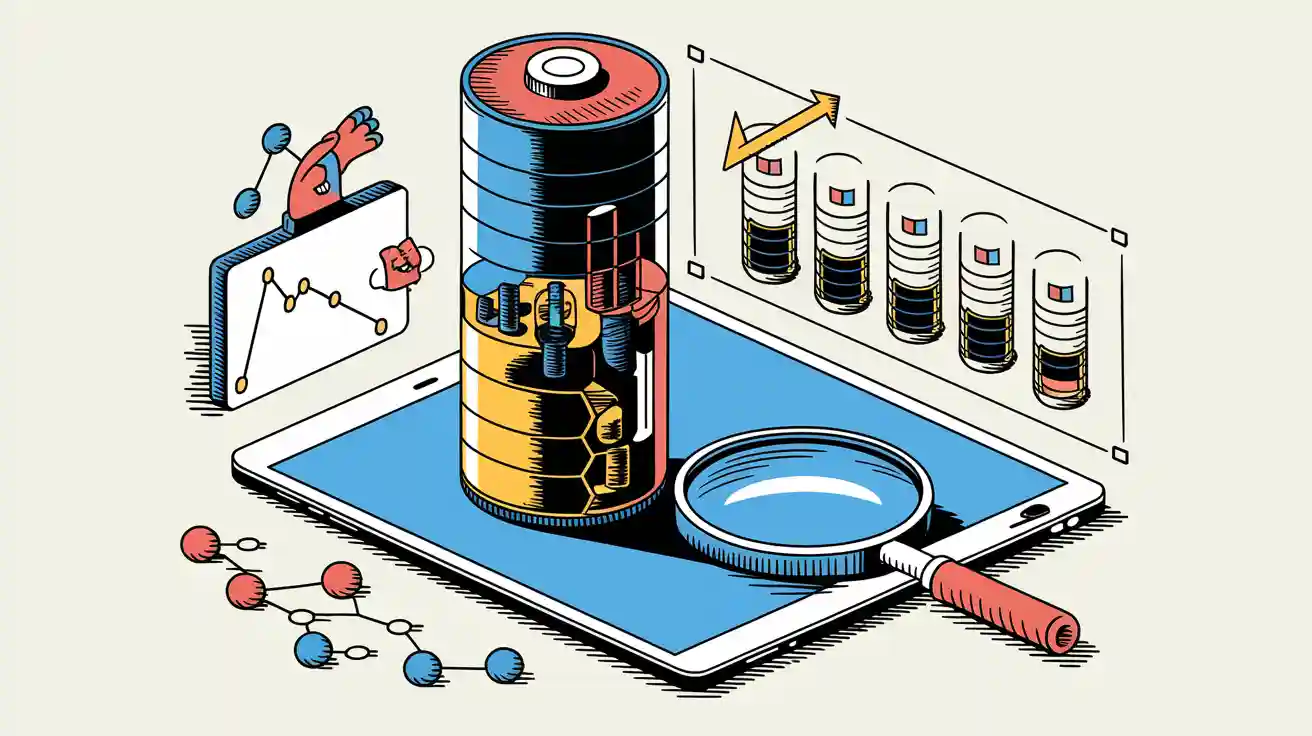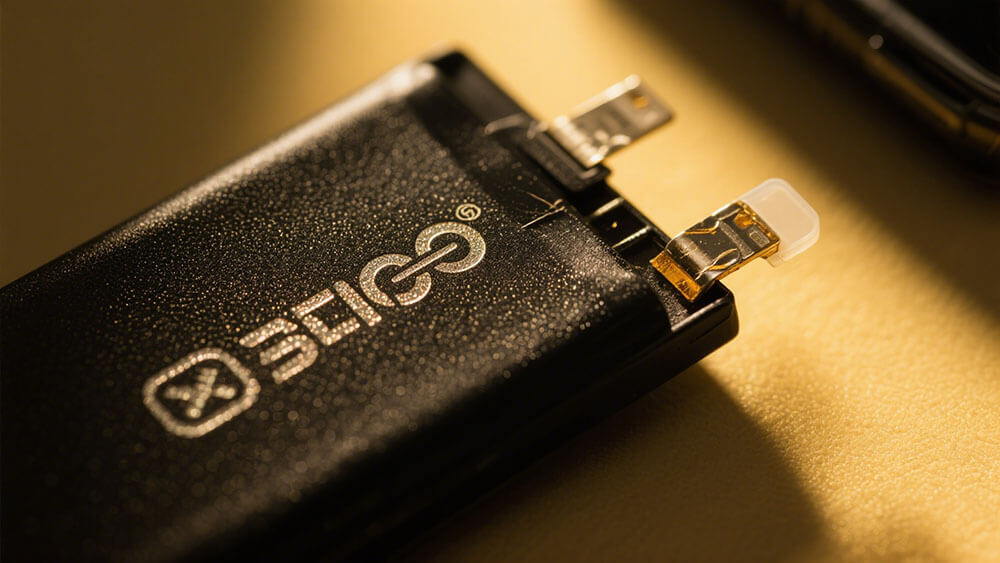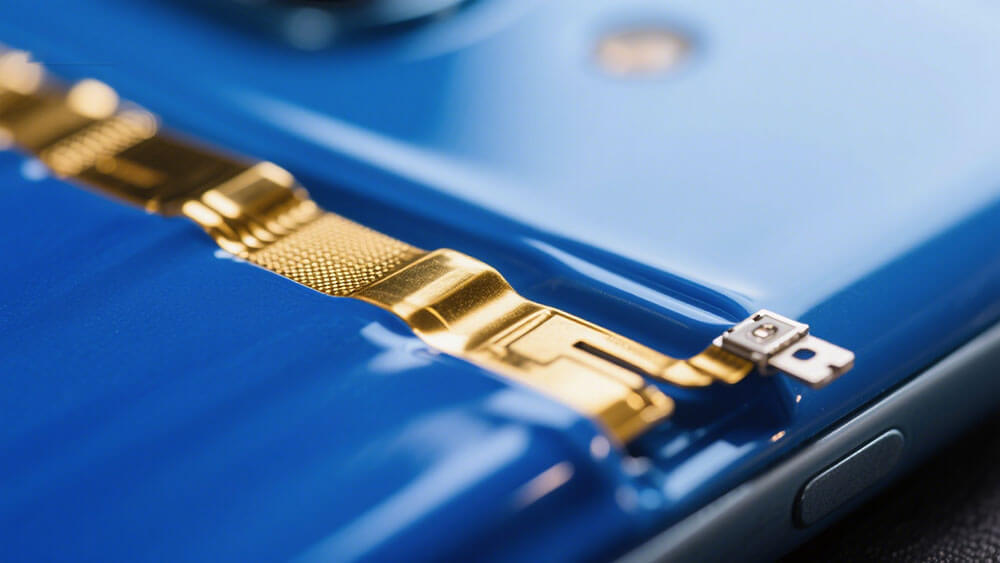
You experience capacity loss in lithium-ion batteries due to internal chemical changes during the battery aging process. Electrochemical models show SEI layer growth, lithium plating, and electrode degradation drive capacity fade and shorten battery life. External factors also impact battery performance and overall life, making battery management crucial for What Causes Capacity Loss of lithium battery.
Key Takeaways
Lithium battery capacity fades mainly due to internal changes like SEI layer growth, lithium plating, and electrode wear, which reduce the battery’s ability to hold charge.
You can extend battery life by controlling temperature, using proper charging methods, and storing batteries at partial charge in cool environments.
A strong battery management system helps monitor battery health, prevent overcharging, and optimize usage to slow down capacity loss and improve reliability.
Part 1: What Causes Capacity Loss of Lithium Battery Packs

Understanding what causes capacity loss of lithium battery packs is essential for optimizing performance and extending service life in business-critical applications. You encounter capacity fade in lithium-ion batteries due to a combination of internal chemical changes and operational stresses. Let’s break down the main mechanisms that drive this process.
1.1 Lithium-Ion Batteries: Ion Movement
When you use a lithium-ion battery pack, lithium ions shuttle between the anode and cathode during charge and discharge cycles. This movement enables energy storage and release. Over time, repeated cycling leads to gradual changes in the battery’s internal structure. You will notice that as the number of cycles increases, the battery begins to lose capacity, resulting in insufficient battery capacity for your application.
Statistical studies confirm this trend:
Spearman correlation coefficient analysis shows a very strong correlation (absolute SCC > 0.99) between health indicators and lithium-ion battery capacity, confirming capacity fade.
Experimental cycling tests on commercial NMC Lithium battery cells at 25°C demonstrate a clear decrease in capacity as cycles increase, eventually reaching the failure threshold (80% of nominal capacity).
These results align with predictive models and real-world observations, highlighting the inevitability of capacity fade in lithium-ion batteries.
1.2 SEI Layer Growth
The solid electrolyte interphase (SEI) layer forms on the anode surface during the first few cycles. As you continue to use the battery, this layer thickens and evolves. SEI growth is one of the primary answers to what causes capacity loss of lithium battery packs.
Multi-scale imaging and chemical analysis reveal that the SEI layer grows from a thin nanometer film to a micron-sized structure, especially around silicon domains in advanced anodes.
This growth traps lithium ions, making them unavailable for energy storage and causing you to lose capacity.
Elemental mapping shows increased lithium, oxygen, and fluorine in the SEI, indicating ongoing chemical changes that degrade performance.
Electrochemical modeling demonstrates that SEI growth depletes lithium-ion concentration and reduces lithiation rates, directly linking SEI evolution to capacity fade.
Deep learning-based microstructure analysis indicates up to 50% loss of silicon volume fraction in active domains after 300 cycles, with lithium trapped near altered silicon cores.
Tip: You can slow SEI growth by optimizing charging protocols and maintaining moderate temperatures, which helps reduce insufficient battery capacity in your packs.
1.3 Lithium Plating
Lithium plating occurs when metallic lithium deposits on the anode surface, especially during fast charging or at low temperatures. This process is a major contributor to what causes capacity loss of lithium battery packs.
Lithium plating causes both reversible and irreversible capacity fade. Irreversible plating damages the SEI layer, consumes active lithium, and increases internal resistance.
Experimental studies using advanced imaging techniques confirm that metallic lithium can become electrically isolated, leading to permanent loss of active lithium and further capacity fade.
The formation of a thicker, porous SEI layer due to plating inhibits ion flow, reducing battery performance and accelerating battery degradation.
Accumulation of lithium plating products can trigger sudden capacity loss events, known as the knee point effect.
Note: Avoid charging at high rates or low temperatures to minimize lithium plating and extend the life of your lithium-ion battery packs.
1.4 Electrode Degradation
Electrode degradation is another key factor in what causes capacity loss of lithium battery packs. Over time, the active materials in the electrodes break down, dissolve, or lose contact with the current collector.
Quantitative analysis uses the variance of capacity differences at different C-rates to detect the knee point in battery degradation, distinguishing between self-limiting and accelerating modes.
This method enables you to assess the health state of individual cells and supports decisions on cell reuse or recycling.
Analytical models predict and optimize rate capability based on electrode thickness and discharge rate, providing insights for cell-level battery design and pack optimization.
Aspect | Description |
|---|---|
Model Type | Quantitative analytical model predicting battery rate performance |
Key Variables | Electrode thickness, discharge rate |
Application | Cell-level battery design and optimization |
Insights | Rate performance affected by electrode material properties |
1.5 Side Reactions
Side reactions within the cell also contribute to what causes capacity loss of lithium battery packs. These include electrolyte decomposition, gas formation, and dissolution of transition metals from the cathode.
These reactions consume active lithium and electrolyte, leading to insufficient battery capacity and increased internal resistance.
The loss of lithium inventory (LLI), loss of active materials (LAM), and electrolyte loss (LE) all contribute to capacity fade.
Battery management systems (BMS) play a critical role in monitoring these processes and optimizing working conditions to slow battery degradation. Learn more about BMS operation and components.
Industry Insight: A comprehensive review in Nature highlights that battery degradation arises from complex internal reactions and is influenced by design, production, and usage conditions. You should consider these factors throughout the battery’s life cycle, from cell design to second-life applications.
Statistical and Environmental Evidence
You can see the impact of environmental conditions on what causes capacity loss of lithium battery packs in the following table:
Condition | Degradation Rate (Capacity Fade) | Notes |
|---|---|---|
Room Temperature (0.5C) | 0.005% per hour | Baseline degradation rate |
High Temperature (0.5C) | 0.07% per hour | 14 times higher degradation rate than room temperature |
Low Temperature (-25°C, 2C rate) | Increased lithium plating and dendritic growth | Leads to capacity fade and risk of internal short circuits |
Low Temperature (0.4C rate) | Formation of ‘dead lithium’ deposits | Causes irreversible capacity loss |
Low Temperature Exposure (24h) | Capacity degradation increase by 0% (0.5C), 1.92% (1C), 22.58% (2C) | Degradation accelerates with higher cycling rates and longer exposure |
You must manage temperature, charge/discharge rates, and storage conditions to minimize capacity fade and avoid insufficient battery capacity in your lithium-ion battery packs.
Part 2 : Factors Accelerating Lithium Battery Capacity Loss

2.1 Temperature Effects
You must control temperature to protect your lithium-ion battery pack’s life. Elevated temperatures accelerate lithium plating and SEI layer growth, leading to rapid capacity fading. For example, research shows that at 40°C, loss of lithium inventory increases significantly compared to 25°C or 0°C. The table below summarizes the impact:
Temperature | Capacity Loss Trend | Key Degradation Mechanism |
|---|---|---|
0°C | Slow | Minor SEI growth |
25°C | Moderate | Balanced SEI and plating |
40°C | Fast | Accelerated plating and SEI growth |
Maintaining battery temperature below 30°C helps you slow degradation and extend battery life.
2.2 Overcharging and High Voltage
Overcharging or using high cut-off voltages damages your battery pack. You will see increased internal resistance, reduced energy density, and higher risk of lithium plating. Experimental data confirm that overcharging leads to sharp temperature rises and mechanical stress, which can trigger safety issues. Always use a reliable battery management system (BMS) to prevent overcharging and protect your investment.
2.3 Charge/Discharge Rates
High charging and discharging rates accelerate degradation. Studies show that fast charging, especially at low temperatures, causes lithium ions to deposit as metallic lithium, reducing cycle life. Discharging at high rates also increases internal resistance and capacity loss. You should optimize your charging protocols and avoid high current spikes to maximize battery performance.
2.4 Storage Conditions
Proper storage conditions are critical for battery longevity. Storing packs at high state of charge or in hot environments increases aging rates. Controlled experiments demonstrate that thermal management systems, such as phase change materials, help regulate temperature and extend cycle life. Store your packs in cool, dry environments at partial charge for best results.
2.5 Deep vs. Partial Cycling
Deep cycling (full charge to full discharge) shortens battery life. Partial cycling, such as operating between 25% and 75% state of charge, allows your pack to achieve more cycles before capacity drops below 80%. Industry data show that partial cycling can nearly double the usable life of your battery pack.
2.6 Calendar Aging
Even when not in use, your lithium-ion battery ages over time. Calendar aging results from ongoing chemical reactions inside the cell. You can slow this process by storing packs at moderate temperatures and partial charge.
For custom solutions to optimize your battery pack’s life and performance, consult our OEM/ODM experts.
You face battery capacity loss from SEI growth, lithium plating, and electrode degradation, which all shorten battery lifetime. Calendar aging also reduces battery capacity, as shown by studies tracking up to 13 years of commercial cell data:
Röder et al. (2014) and Schmitt et al. (2017) confirm calendar aging impacts battery lifetime and battery capacity even without cycling.
Higher temperature and state of charge accelerate battery capacity loss and shorten battery lifetime.
You can extend battery lifetime by optimizing charging, controlling temperature, and storing packs properly. Ongoing research continues to improve battery capacity and battery lifetime for business-critical applications.
FAQ
1. What is the main cause of capacity loss in rechargeable batteries used in battery packs?
You see capacity loss in rechargeable batteries mainly from SEI layer growth, lithium plating, and electrode degradation. These processes reduce available lithium and limit battery pack performance.
2. How can you extend the lifespan of rechargeable batteries in business-critical applications?
You should optimize charging protocols, control temperature, and store packs at partial charge. Regular monitoring and a robust BMS help maximize the lifespan of rechargeable batteries.
3. Why do rechargeable batteries in battery packs degrade faster in high-temperature environments?
High temperatures accelerate chemical reactions inside rechargeable batteries. This speeds up SEI growth and lithium plating, causing faster capacity loss and reducing battery pack reliability.
For tailored solutions and expert advice on rechargeable batteries, contact Large Power’s customization team.




